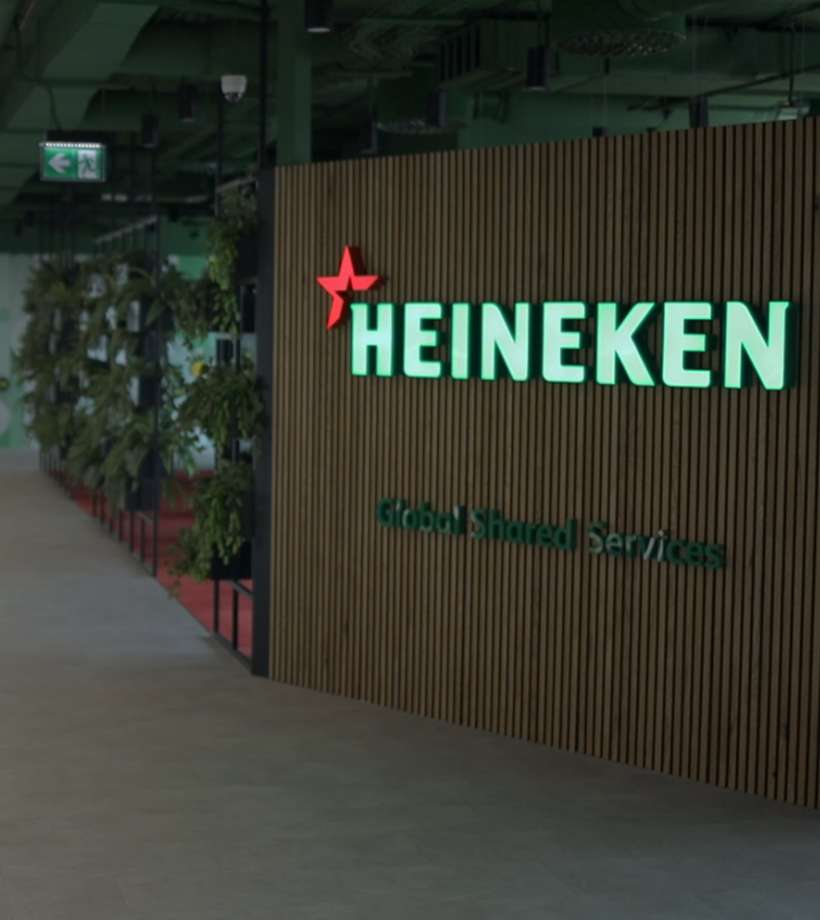-
Featured services
2026 Global AI Report: A Playbook for AI Leaders
Why AI strategy is your business strategy: The acceleration toward an AI-native state. Explore executive insights from AI leaders.
Access the playbook -
Services
Alle Services und Produkte anzeigenNutzen Sie unsere Fähigkeiten, um die Transformation Ihres Unternehmens zu beschleunigen.
-
Services
Network-Services
Beliebte Produkte
-
Services
Cloud
Beliebte Produkte
-
Services
Consulting
-
Edge as a Service
-
Services
Data und Artificial Intelligence
- KI und intelligente Lösungen
- Daten-/KI-Strategie und -Programm
- Data Engineering und Plattformen
- Daten-Governance und -management
- Datenvisualisierung und Entscheidungsfindung
- $name
- GenAI Platforms
- GenAI Industry Services
- GenAI Infrastructure Services
- GenAI Value Transformation
- Data und Artificial Intelligence
-
-
Services
Global Data Centers
-
Beliebte Produkte
-
Services
Application Services
-
Services
Sustainability Services
-
Services
Digital Workplace
-
Services
Business Process Services
-
Services
Generative AI
-
Services
Cybersecurity
-
Services
Enterprise Application Platforms
![]()
IDC MarketScape: Anbieterbewertung für Rechenzentrumsservices weltweit 2023
Wir glauben, dass Marktführer zu sein eine weitere Bestätigung unseres umfassenden Angebotes im Bereich Rechenzentren ist.
Holen Sie sich den IDC MarketScape -
-
Erkenntnisse
Einblicke und RessourcenErfahren Sie, wie die Technologie Unternehmen, die Industrie und die Gesellschaft prägt.
-
Erkenntnisse
Ausgewählte Einblicke
-
Die Zukunft des Networking
-
Using the cloud to cut costs needs the right approach
When organizations focus on transformation, a move to the cloud can deliver cost savings – but they often need expert advice to help them along their journey
-
So funktioniert Zero-Trust-Sicherheit für Ihr Unternehmen
Sorgen Sie dafür, dass Zero-Trust-Sicherheit für Ihr Unternehmen in hybriden Arbeitsumgebungen funktioniert.
-
-
Erkenntnisse
![]()
Copilot für Microsoft 365
Jeder kann mit einem leistungsstarken KI-Tool für die tägliche Arbeit intelligenter arbeiten.
Copilot noch heute entdecken -
-
Lösungen
Alle LösungenWir helfen Ihnen dabei, den Anforderungen an kontinuierliche Innovation und Transformation gerecht zu werden
Global Employee Experience Trends Report
Excel in EX mit Forschung basierend auf Interviews mit über 1.400 Entscheidungsträger:innen auf der ganzen Welt.
Besorgen Sie sich den EX-Report -
Erfahren Sie, wie wir Ihre Geschäftstransformation beschleunigen können
-
Über uns
Neueste Kundenberichte
-
Liantis
Im Laufe der Zeit hatte Liantis, ein etabliertes HR-Unternehmen in Belgien, Dateninseln und isolierte Lösungen als Teil seines Legacysystems aufgebaut.
-
Randstad
We ensured that Randstad’s migration to Genesys Cloud CX had no impact on availability, ensuring an exceptional user experience for clients and talent.
-
-
![Heineken Landing Page]()
NTT DATA und HEINEKEN
HEINEKEN revolutioniert die Mitarbeitererfahrung und die Zusammenarbeit mit einem hybriden Arbeitsplatzmodell.
Lesen Sie die Geschichte von HEINEKEN -
- Karriere
Topics in this article
Einfach ausgedrückt geht es bei einer softwaredefinierten Infrastruktur (SDI) darum, Software für die Steuerung und Verwaltung von Hardware zu nutzen.
Weil cloud-basierte Workloads höhere Verfügbarkeit, einen größeren Umfang und mehr Performance in der gesamten Infrastruktur Ihres Unternehmen erfordern, wird das traditionelle Hub-and-Spoke-Modell – mit zentralen Rechenzentren und Anwendungen, die mit Filialen, Lagern, Logistik und mehr in Verbindung stehen – von SDI ersetzt. Die Hardware verbleibt jetzt vor Ort, während sich die Management-Plattform oder der Controller, der Veränderungen umsetzt, für Einfachheit sorgt und Agilität ermöglicht, in der Cloud befindet.
In der Softwaresteuerung, ob vor Ort oder in einer Cloud-Netzwerk-Architektur, werden immer häufiger APIs, KI und erweiterte Analytik genutzt, um für Agilität und Verfügbarkeit sowie eine zentralisierte Orchestrierung und Standardisierung für die Umsetzung von Richtlinien und Governance zu sorgen.
SDI Controller oder cloud-basierte Management-Plattformen vereinfachen und konsolidieren die Betriebsführung, während die zentralisierte Steuerung das Risiko für menschliches Fehlverhalten mindert und die Abläufe innerhalb der Infrastruktur transparenter macht.
Warum Unternehmen auf SDI umstellen
Unternehmen haben viele Gründe, SDI einzusetzen. Dazu gehören Geschäftsagilität durch eine zeitnahe Reaktion auf Veränderungen, eine schnellere und zuverlässige Anwendungs- und Service-Bereitstellung sowie die Verbesserung der Effizienz von IT-Vorgängen.
Mit SDI können Sie Orchestrierung und Standardisierung für die anfängliche Gerätekonfiguration nutzen und eine durchgängige, richtlinienbasierte Bereitstellung gewährleisten. Außerdem können Sie die tagtägliche Verfügbarkeit und Sicherheit Ihrer Infrastruktur besser steuern: Integrationen auf API-Ebene generieren erweiterte Analysen, die für prädiktive Einblicke sowie proaktive Sicherheitsbenachrichtigungen verwendet werden.
Kurz gesagt: Durch die Bereitstellung von SDI erhalten Sie die Vorteile einer cloudfähigen Infrastruktur mit der Skalierbarkeit, Performance und Widerstandsfähigkeit, die Sie für sichere, hochwertige Benutzer- und Kundenerfahrungen brauchen.
Entscheidend für eine erfolgreiche digitale Transformation ist jedoch, den Übergang von einem hardware-zentrierten Ansatz hin zu SDI gut zu begleiten. Das Software-Asset-Management wird dabei komplexer und kann sich negativ auf den Lebenszykluswert und die Kapitalrendite (ROI) auswirken, wenn die Lizenzierung nicht gut gehandhabt wird.
Unternehmen stehen möglicherweise auch der Herausforderung gegenüber, hybride Infrastrukturen mit einer Kombination von Altkomponenten und softwaredefinierten Assets betreiben und trotzdem Anwendungsverfügbarkeit und Geschäftskontinuität unterstützen zu müssen. Diese Kombination von Technologien erfordert, dass IT-Vorgänge neu gedacht werden.
- LESEN SIE AUCH → Schneller zu Abonnement-Software mit Services, bei denen Sie die Kontrolle übernehmen
SDI im Vergleich zum traditionellen Ansatz
Die Veränderung von traditioneller Hardware hin zu dynamischer, softwarebasierter Infrastrukturkontrolle lässt sich wie folgt zusammenfassen:
Diesen Übergang haben wir in unseren eigenen Support-Services durchlebt, die über 30 Jahre lang die Asset-Verfügbarkeit für Hardware von verschiedenen Anbietern unterstützt haben. Jetzt haben wir diesen Leistungsbereich um Lifecycle-Services erweitert, um Performance und ROI bei software-gesteuerter Infrastruktur-Hardware zu optimieren.
Unsere Services-Plattform vereint mehrere Datenquellen und liefert damit Erkenntnisse an einem zentralen Ort. So wird es einfacher und weniger riskant, mehrere Lizenztypen zusammen mit der entsprechenden und traditionellen Hardware zu verwalten. Unsere Kunden erhalten damit die Transparenz und Kontrolle, die einen operativen Support durch datengesteuerte Erkenntnisse vereinfacht – für eine verbesserte Technologieeinführung und Software-Lebenszykluswert.
Ein Infrastrukturmanagement war bisher auf manuelle Prozesse angewiesen. Hardware-Komponenten wie Netzwerk-, Rechenzentrum- und Sicherheitsgeräte erforderten physische Konfiguration und Wartung am Standort. IT-Teams benötigen Spezialwissen, um verschiedenste komplexe und immer häufiger überholte Ausstattung zu verwalten und zu warten.
Angesichts der Tatsache, dass jede Hardware separat eingerichtet und konfiguriert werden muss, ist das ein zeitaufwändiger und – angesichts menschlicher Fehlbarkeit – fehlerträchtiger Prozess.
Die 5 wichtigen Vorteile von SDI
Hier sind fünf Beispiele, wie Ihr Unternehmen von SDI profitieren kann:
- Skalierbarkeit: Sie möchten Ihre Infrastruktur erweitern oder verkleinern? SDI lässt sich einfacher skalieren und ist agiler als traditionelle Hardware. Neue Technologien aus der Ferne bereitstellen und konfigurieren zu können ist ideal, wenn Sie sich an dynamische Geschäftsanforderungen anpassen müssen.
- Geschwindigkeit: Ein softwaredefinierter Ansatz ermöglicht die Automatisierung von Betriebsprozessen. Sie profitieren von Effizienz sowohl in Bezug auf die anfängliche Implementierung als auch auf die Bereitstellung. Außerdem sind Sie in der Lage, Compliance mit Software-Versionen zentral sicherzustellen und Infrastruktur-Richtlinien durchzusetzen.
- Vereinfachung: Die Verwaltung mehrerer Technologien wird weniger komplex, wenn Sie mithilfe von APIs die Vorteile erweiterter Analytik für sich nutzen. Für diesen Ansatz haben wir uns bei unserem Service-Portal entschieden. So möchten wir unseren Kunden helfen, ihre Infrastrukturen mit verschiedenen Technologien von verschiedenen Anbietern zu verwalten.
- Ausgaben: Funktionalität ist eine Sache, Finanzen sind eine andere. Unsere Erfahrung hat gezeigt, dass unsere Kunden mit der Konsolidierung von Abonnement-Software in Enterprise Agreements üblicherweise Kosteneinsparungen von über 30 % generieren. Ebenso mindern Erkenntnisse zum Lizenzmanagement Ihr finanzielles Risiko im Zusammenhang mit Compliance-Verstößen. Gleichzeitig werden eine effiziente Nutzung und volle Transparenz von Lizenzberechtigungen gewährleistet.
- Sicherheit: Jedes System ist nur so gut wie sein schwächstes Glied. SDI gilt als sicherer als traditionelle Hardware, da mit Daten, zentralisierter Steuerung und Plattformautomatisierung das Risiko für menschliches Fehlverhalten reduziert wird. Erweiterte Analytik, prädiktive Einblicke und Sicherheitsbenachrichtigungen machen ein proaktives Einschreiten einfacher und schneller möglich.
SDI und Automatisierung
Wie bereits gesagt, spielt Automatisierung eine zentrale Rolle beim Erfolg Ihrer SDI. Sie ermöglicht die Nutzung von Orchestrierungs- und Standardisierungstools zur Optimierung und Vereinfachung der Prozesse zur Infrastrukturverwaltung.
Neben der anfänglichen Konfiguration und der Bereitstellung von Maschinen und Anwendungen können Sie außerdem automatisch die Performance Ihrer Infrastruktur und ihre Fähigkeit, Geschäftskontinuität zu unterstützen, überwachen. Prädiktive Einblicke und Sicherheitsbenachrichtigungen geben Ihnen die Möglichkeit, aktuelle oder potenzielle Probleme proaktiv anzugehen.
Sie profitieren aber auch von weiteren Vorteilen – von automatisierten Backups und Datenwiederherstellung, beispielsweise, sowie von verbesserter Sicherheit und einer Funktionalität zur Notfallplanung.
Alle diese Aspekte können intern oder mit der Unterstützung eines SDI-Service-Anbieters bearbeitet werden.
- LESEN SIE AUCH → 6 Gründe, warum Software Lifecycle Management wichtig ist
SDI funktioniert vor Ort und in der Cloud
SDI ist ein unerlässlicher Bestandteil einer erfolgreichen Cloud-First-Strategie, denn Sie erhalten damit die erforderliche Agilität und Skalierbarkeit, um cloud-basierte Workloads zu unterstützen und Anwendungen für alle Benutzer unabhängig von Standort oder Gerät verfügbar zu machen.
Softwaredefinierte Technologien für Rechenzentren – einschließlich Speicher und Datenverarbeitung – unterstützen Private- und Public-Cloud-Umgebungen. Unabhängig davon, ob Sie einen Single-Cloud-, Hybrid-Cloud- oder Multicloud-Ansatz verfolgen: Die Technologie muss software-gesteuert sein, damit Sie das Potenzial der Cloud voll ausschöpfen.
Auch Netzwerk-Services wurden durch softwaredefinierte Technologien verwandelt. Mit der Fähigkeit, Netzwerk-Funktionen wie Sicherheit und IP-Adressierung zu virtualisieren, liefert das gemanagte software-definierte Wide-Area Network (SD-WAN) die Ende-zu-Ende-Konnektivität und Anwendungslieferung, die für den Erfolg digitaler Geschäftsstrategien unerlässlich ist.
Bei NTT unterstützen unsere Ressourcen und Services Kunden in verschiedenen Regionen und Branchen dabei, ihre Zielsetzungen bei der Modernisierung ihrer Infrastruktur zu erreichen. Wir können Technologielösungen vom Netzwerkrand bis zur Cloud konzipieren und bereitstellen, um den Wert traditioneller Assets zu maximieren und die Amortisierungszeit neuer softwaredefinierter Investitionen zu verkürzen.
In Abhängigkeit von Ihrer Geschäftsstrategie und Ihrem internen Leistungsvermögen haben Sie die Wahl zwischen dem kompletten Managed-Service-Paket und einer unterstützten Infrastruktur.
Topics in this article
Softwaredefinierte Infrastruktur-Services: Vereinfachen Sie Ihre IT-Abläufe und maximieren Sie den Lebenszykluswert Ihrer Assets
Frühe Probleme vermeiden
Bei einer Modernisierung mit SDI werden Sie agiler und flexibler bei der Verwaltung Ihrer Umgebung. Sie können außerdem Kosten, Komplexität und Risiken reduzieren.
Auf dem Weg von einer traditionellen hin zu einer softwaredefinierten Infrastruktur können Sie jedoch auf neue Herausforderungen stoßen – das kann damit beginnen, wie Sie die Migration durchführen und welche Technologien Sie nutzen möchten.
Diese Herausforderung kann von den Erwartungen in Ihrem Unternehmen noch verstärkt werden. Möglicherweise sollen sie schneller als erwartet Geschäftswert und einen verbesserten ROI liefern, doch gleichzeitig stehen Sie sich ständig ändernden Geschäftsanforderungen und einem Mangel an technischer Expertise gegenüber.
SDI Services bieten Transparenz, Kontrolle und schnellere Amortisierung
Der wichtigste Aspekt von SDI ist die damit verbundene Transparenz und Kontrolle. In dieser Hinsicht können SDI Services eine Bandbreite von Vorteilen liefern, von Asset-Verfügbarkeit bis hin zu einer dynamischen und kontinuierlichen Optimierung Ihrer Infrastruktur.
Wenn Sie möchten, können Sie SDI-Services vor Ort implementieren. Damit haben Sie die Möglichkeit, Ihre eigenen softwaredefinierten Technologien zu schaffen und zu verwalten und haben mehr Kontrolle und Flexibilität in Bezug auf Infrastruktur und betriebliche Ressourcen.
Und sollte Ihr Unternehmen die operative Kontrolle von Teilen oder der gesamten Infrastruktur beibehalten wollen, kann ein erfahrener Systemintegrations- und Servicepartner wie NTT Ihnen helfen, diese Herausforderungen souverän und zügig zu meistern.
Unsere Software-defined Infrastructure Services geben unseren Kunden Zugang zu Innovation und Expertise, die für das erfolgreiche Management ihrer softwaredefinierten Infrastruktur entscheidend sind. Gleichzeitig erhalten sie Transparenz und Kontrolle, um informierte Entscheidungen zu treffen, und zwar von der Beschaffung bis hin zu Governance.
Um die Macht dieser Daten zu nutzen, können unsere Kunden auf unser Service-Portal zugreifen, das ihnen Einblicke in die Verfügbarkeit und den Lebenszyklusstatus ihrer Hardware und Software gibt. Das Portal lässt sich vollständig konfigurieren und kann so eingestellt werden, dass Informationen wie Infrastruktur-Einblicke und Risikoanalysen, prädiktive Erkenntnisse und Benachrichtigungen zu Schwachstellen angezeigt werden.
Sie bleiben außerdem immer auf dem neuesten Stand zu allen Aspekten von Technologieeinsatz bis Asset-Verfügbarkeit und optimieren – über unser Digital Wallet – das Software Asset Management mit Einblicken in den Lebenszyklus von Lizenzen verschiedener Anbieter.
Einmal im Quartal stellen wir Empfehlungen bereit, basierend auf Expertenanalysen der erweiterten Analytik. Wir zeigen darin auf, wie sich der Technologieeinsatz beschleunigen lässt, wie man Sicherheit und Asset-Verfügbarkeit verbessert und wie sich ROI kontinuierlich steigern lässt, um eine Effizienz der Nutzung und Procurement-Praktiken zu gewährleisten.
Mit Erkenntnissen zu Hardware- und Software-Assets in nahezu Echtzeit, in Verbindung mit unseren vierteljährlichen Empfehlungen, sind Sie bestens ausgerüstet, um die Amortisierungszeit zu verkürzen, Kosten zu kontrollieren und ROI zu verbessern.





